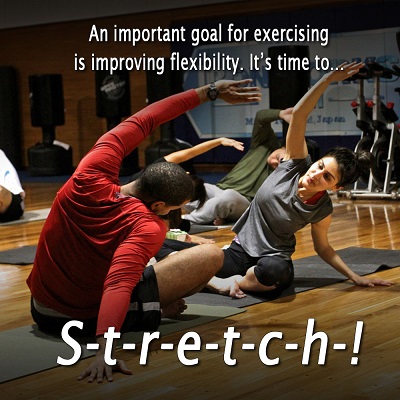 People exercise for different reasons. Some to lose weight, as exercise is without a doubt a very effective weight loss strategy. Others exercise to get stronger muscles or to improve their cardiovascular fitness. Still, others exercise to get healthier overall and lessen their chances of developing sickness. Whatever reasons people have as to why they exercise, exercise is good for the body, the mind, and our overall wellness.
People exercise for different reasons. Some to lose weight, as exercise is without a doubt a very effective weight loss strategy. Others exercise to get stronger muscles or to improve their cardiovascular fitness. Still, others exercise to get healthier overall and lessen their chances of developing sickness. Whatever reasons people have as to why they exercise, exercise is good for the body, the mind, and our overall wellness.
However, there are many different types of exercise. That makes exercising a lot more interesting with so many routines on offer. There are actually four broad types of exercises and all these are related to our fitness goals; strength, balance, flexibility, and endurance.
They’re sometimes used interchangeably, and ideally, good fitness routines should consist of all four. However, one does not necessarily have to perform all these routines daily. Having variety is good for maintaining fitness.
What Flexibility Exercises are For
One of the most important goals for exercising is improving one’s flexibility. As we age and unconsciously lessen our range of movement, our muscles tend to get shorter. Taking an active role in maintaining their length can be crucial for us to avoid unnecessary injuries or muscle strain.
We can continually improve our muscles’ length and maintain safe movement without experiencing discomfort every time we try to move, by improving our flexibility. Flexibility exercises or routines aren’t always the most exciting; some people simply find them boring, but it is crucial because our level of flexibility ensures that our workouts are safe and effective.
There are various types of stretching techniques that can help improve an individual’s flexibility. Stretching is not just one exercise routine. But what these exercises do is stretch the muscles, enabling us to become more flexible, so we can do other types of exercises more easily without strain or unnecessary injury.
Stretching Techniques that Help with Flexibility
Static Stretching
Static stretching is the most widely known type of stretching and it is conducted by stretching a group of muscles to a safe maximum point and maintaining that position for at least 30 seconds, or longer.
Dynamic Stretching
Whereas static stretching holds the stretch movement in place for more than 30 seconds, dynamic stretching necessitates continuous movement of more than a single pattern. A few examples of dynamic stretching are leg swings, arm swings, or torso twists. Dynamic stretching is often conducted to improve a person’s flexibility in a particular activity, whether that is to prepare for a race or practice a sport. But it should be noted that it doesn’t involve jerky movements or bounces.
Ballistic Stretching
Ballistic stretching often involves forcing a part of the body to go beyond its normal range of movement. It utilizes the momentum of a moving force, often the limb, attempting to force movement beyond the normal range. Because of that, ballistic stretching could lead to injury as it doesn’t allow the muscle group to get used to a certain motion, or even relax in a particular stretch position.
By repeatedly activating the stretch reflex, it can cause the muscles to tighten up instead. Given this, ballistic stretching isn’t always considered helpful or useful. However, it is often conducted for athletic drills, and can sometimes be safely performed when preceded by static stretching.
What is important to remember is that to improve your flexibility you need to stretch! Whatever stretching technique works for you, just do it. Your range of motion and flexibility will keep your body in the best of health. So don’t forget to stretch every day!






